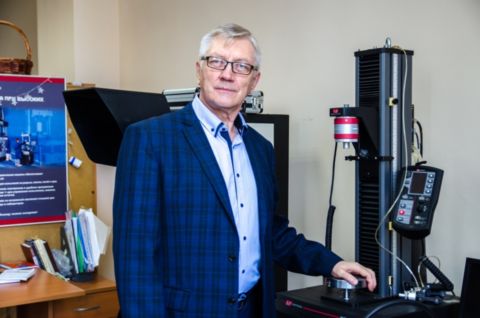Composite materials, which are employed in modern technology, have great rigidity, strength, and fragility. Scientists have learned how to produce unique composites that have unusual pseudoplasticity.
The professor from South Ural State University Sergei Sapozhnikov, together with colleagues from KU Leuven, Belgium, have developed a pseudoplastic hybrid of two initially fragile carbon plastics. The work employs an original theory, proposed by Prof Sapozhnikov. An article on the new pseudoplastic CFRP (carbon fiber reinforced polymer) has been published in Composites Part B: Engineering, the journal with the highest JCR-rank (2019) in the composite materials field.
Durable composite of fragile components
Carbon fiber composite materials have been used for decades. Their use is remarkably widespread in aviation and astronautics. These materials are light-weight, but at the same time possess extraordinary strength. However, composite materials are relatively fragile. If a structure made of such a material is affected by a force slightly greater than the calculated value, then the object is destroyed instantly. Therefore, scientists who study composites are proposing alternative options for pseudoplastic non-fragile materials. To create them, different composites are combined: carbon fiber and fiberglass, carbon fiber and organic plastic, etc.
Professor of the Institute of Engineering and Technology Sergei Sapozhnikov, together with professors Yentl Svolfs and Stepan Lomov from the Catholic University of Leuven (KU Leuven, Belgium), proposed to produce an experimental material based on two brittle carbon plastics – ultra-high-strength and ultra-high-modulus.
The joint work was supported with a grant from the Russian Science Foundation (RSF), by the administration of the Catholic University of Leuven and the Japanese company TORAY, a supplier of materials and sponsor of the Chair for Composite Materials in the Catholic University of Leuven. Sergei Sapozhnikov visited KU Leuven to carry on his research on the unique technological, testing, and analytical equipment. The original theory, developed by Prof Sapozhnikov, allowed a clever design of the tested materials.
It was formerly considered that only thin-layer hybrid composites possess the pseudoplastic properties. The team of scientists showed that the effect of pseudoplasticity can be obtained on composites with standard layer thicknesses. It is only important to have enough fracture toughness at the interface of two layers. The team described this property in their first article.
“I have used two hybrid composites that have never been used to create one material with a unique property called pseudoplasticity. Such materials do not failure suddenly. First, they are initially elastically deformed, then accumulate microdamage, and then destroyed. Pseudoplasticity is necessary to make materials more durable. These hybrid composites have higher strength, but much lower density than steel. With the help of my software program, we created such materials and experimentally proved that these composites can be used,” Sergei Sapozhnikov says.
Pseudoplastic composites are the basis of “smart structures”
The collaboration with the University of Leuven is not accomplished: the team intends to test how the new material will resist repeated loads. Professor Valter Carvelli of Politecnico di Milano, Italy, is also collaborating on this topic. The research will be further developed by the study of polymers wear resistance.
Sergei Sapozhnikov also noticed that the data obtained by the international team can at present be used in practice around the world.
“We hope to establish the properties of pseudoplastic objects made of composite materials, which were created in SUSU. This is necessary to increase reliability and prevent sudden destruction of the material. After all, pseudoplastic composites, due to the accumulation of fibers rupture that is more rigid and fragile, warn that complete destruction of the material is approaching,” Sergei Sapozhnikov says.
Research in the field of materials along with the smart industry and ecology represents the strategic directions of the scientific-educational activities at South Ural State University.
SUSU is a member of the 5-100 Project intended to increase the competitiveness of the university among the world's leading research and academic centers.




